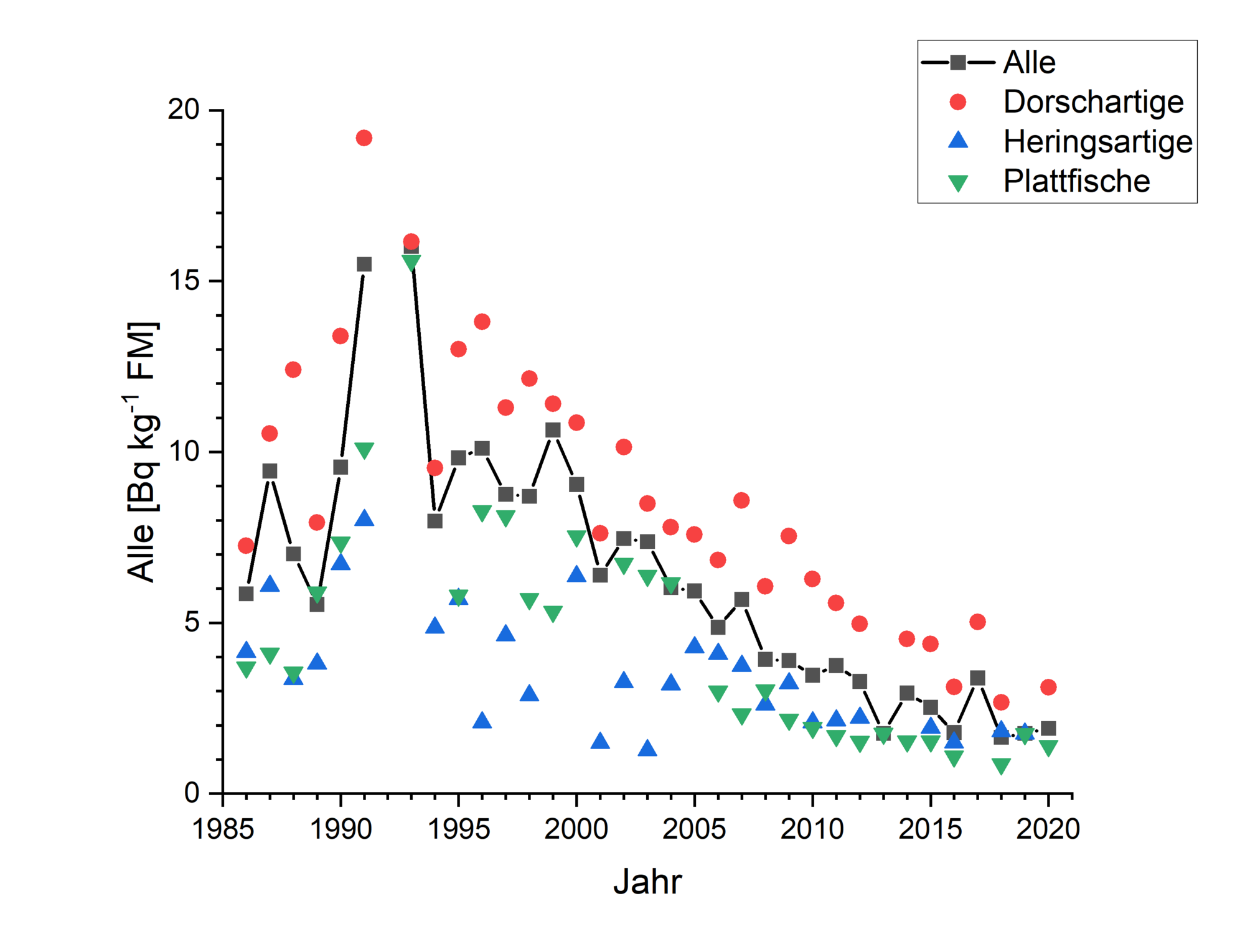
The radionuclide caesium-137 is easily detecable in fish from the German exclusive economic zone, however its concentration shows a decreasing trend. The peak in the beginning of the 1990ies with about 20 Bq Cs-137 per kg fresh weight originates from the input of the Chernobyl accident. Around 5% of the released Cs-137 was deposited in the eastern Blatic Sea and it took about 6 years until the maximum concentration was also reached in the western Baltic Sea. Since that time, the Cs-137 concentration in fish decreased continously. Obviously, the average concentration in Gadiformes (cod, whiting) was around 40% higher than the mean of all fish, while that of Clupeiformes (Herring and Sprat) was only 60% of the average of all fish. We conclude that this is the effect of different feeding of the fish and therewith their trophic level. While Clupeiformes forage plankton, Gadiformes feed on Clupeiformes, which leads to en enrichment of the Caesium in the former.
- Project: FI-1959-2118- Monitoring and asssessment of radioactive substances in marine organisms (no link yet)
- Contact:
Publications
- 0
Aust M-O, Nogueira P (2021) 2.5.5 Fische und Produkte des Meeres und der Binnengewässer. In: Umweltradioaktivität und Strahlenbelastung : Jahresbericht 2018. Bonn: Bundesministerium für Umwelt, Naturschutz und Reaktorsicherheit (BMU), pp 71-75
- 1
Eriksson M, Ikäheimonen TK, Jakobson E, Nielsen SP, Kämäräinen M, Lüning M, Aust M-O, Osvath I, Schmied SAK, Vilimaite-Silobritiene B, Suplinska M, Zalewska T, Vartti V-P (2018) Thematic Assessment of Radioactive Substances in the Baltic Sea, 2011-2015. Helsinki: HELCOM, 74 p, Baltic Sea Environ Proc 151

![[Translate to English:] [Translate to English:]](/media/_processed_/2/9/csm_Embryo-Exp_Gelege_9F_dpf5-200513111619_c8534a8199.jpg)
![[Translate to English:] [Translate to English:]](/media/_processed_/2/9/csm_Embryo-Exp_Gelege_9F_dpf5-200513111619_9027994d44.jpg)





